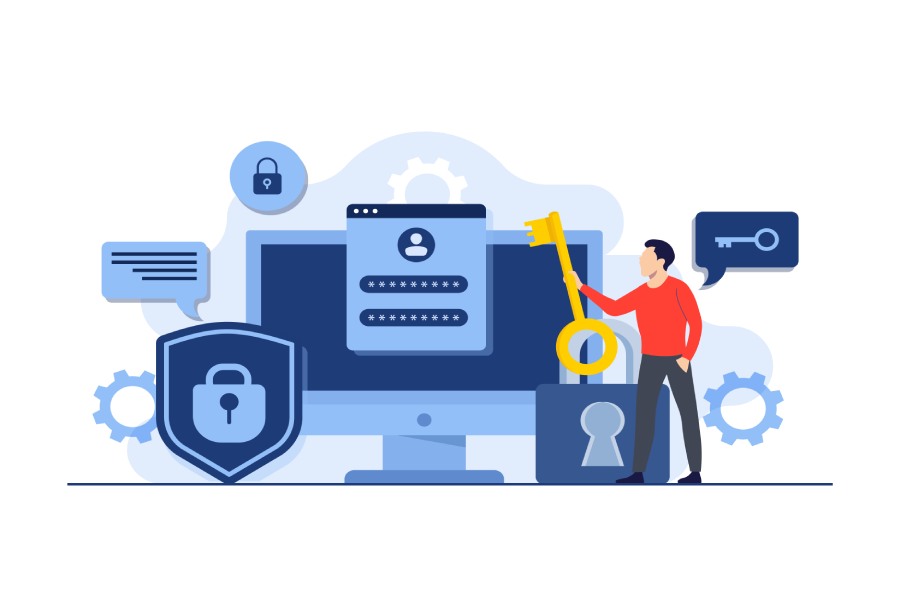You can’t prevent a threat you don’t understand, but how do you understand these cyber threats? The answer is simple: you gather as much data as possible from previous instances, analyze them, and use sophisticated analytical tools to turn this data into insights. Here’s how all of this works and how you can use it to improve your digital security.
Analyzing Advanced Persistent Threats (Apts)
One of the biggest mistakes that people improving their cybersecurity make is assuming that these threats are simple or one-dimensional. The truth is that tools or automatic processes always handle these simplest threats. The problem is that some of these hackers are highly skilled and specialized in what they do.
They won’t just crash your servers. Instead, they’ll infiltrate unnoticed, stay there for a prolonged period, and slowly siphon your data and resources. They might subtly disrupt your operations over a long period so that they make the highest amount of cumulative damage instead of sticking to short, violent bursts that you may expect.
The problem is that it’s like diagnosing a disease with subtle symptoms – it’s very hard to do. If the symptoms were more aggressive, any doctor could tell you what was happening by just glancing at them.
With the help of advanced data analysis and these data-driven insights, you have a shot at much earlier detection and prevention.
A huge thing with these APTs is understanding the motivation. An APT is not just an action; it’s a whole campaign. This means someone is willing to invest much time, effort, and resources into this attack. In other words, these attacks only make sense when they’re highly targeted and carefully conducted. By understanding these motivations, you’ll have an easier time preparing defenses.
The analysis of APTs is not just beneficial for the enterprise but the entirety of the industry. Namely, insights extracted from this can be invaluable in future regulations and standards.
Uncovering Patterns Of Intrusion Through Process Mining
Process mining is a complex approach that extracts insights and knowledge from event logs and uses this to retroactively understand processes so you can do better in the future. This is exactly what you need to improve your digital security and turn this digital security optimization into a frequent process.
Process intelligence is an activity that uses immense computing power, leverages AI technology, and analyzes without bias. Tools like Celonis’ process mining platform and Windsor.ai ELT can gather data from any centralized database, regardless of whether we’re talking about Google Sheets, Excel, or your ERP. Most importantly, it can transform your raw data into standardized process data.
One of the biggest advantages of this process is an enhanced incident response. Since data mining can more easily recognize cyber threat patterns, it can map out the sequence of events during a security incident. This means you’ll notice a problem sooner but also avoid making the same mistakes you did last time. This can drastically improve your incident response speed/time.
As mentioned, process mining allows you to get a much more accurate intrusion pattern. This means you’ll have a much easier time creating simulations and intrusion scenarios, which can be invaluable learning material for your staff. Otherwise, you risk creating training scenarios that are so inaccurate that they give your staff members a false sense of security in their abilities and understanding of the situation.
Besides boosting your digital security, process mining can enhance your overall resilience by drawing parallels between your network traffic and the likelihood of an incident.
Superior User Behavior Analytics
To understand what counts as user behavior, you need to analyze the behavior of individual users and make a profile of each user. Do they always log in from the same device? Are the lengths of their log-in sessions different? Does their order value greatly differ from what they’re usually placing?
Remember that there’s a lot of contextual understanding here, which may sometimes lead to misleading results. Sometimes, even the season or time of day can make a difference between a harmless anomaly and a clear threat.
Your resources will always be limited, which is why, with the help of risk scoring and prioritization, you can have an easier time leveraging your cybersecurity presence. The problem is that, even with the highest level of accuracy, you’ll never know 100%. User behavior can be random, but the high accuracy provided by some of the newest platforms can get you up to speed pretty effectively.
One of the reasons why this is so important is the false positives. Assuming a breach or accusing a user/employee of doing something malicious can negatively affect trust and reputation. This is something you need to avoid.
Most importantly, many other systems rely on this user behavior analysis, which is why integrating your insights into the whole system and coordinating it with other platforms makes a difference.
Monitoring External Exposure Through Proxies
When examining your online presence, the first thing you need to be aware of is the fact that two things taint your research. First, you’re more familiar with your brand, meaning your experience will be much different than your regular clients. You know what you need to look for; if something’s there, you’ll notice it even if your audience misses it. At the same time, if something’s not there, you might miss it quite easily since you probably already would if you knew you should implement it.
The second thing to keep in mind is your Google presence and the fact that your algorithm is highly personalized. Due to your work’s nature, you’ve looked up more industry-related terms than your counterparts. Your location is also tainting your results, which is why you might want to try and hide it. Decent US proxies are relatively easy to find, which means that you have a simple way of emulating the web presence of someone else without changing the location too much.
A chance to simulate external interaction within your own system can give you a chance to get an improved detection of misconfiguration or even conduct a far more accurate vulnerability scanning process.
Some services of your brand are exclusively external-facing, meaning you might have difficulty spotting them as an insider. With the help of proxy monitoring and gathering insights, you can notice changes or disruptions in a matter of seconds.
One last advantage you get this way is the one of access control testing. What does access control look like from the perspective of someone logging in from a different IP and even a different region? Are the additional verification steps going to hold up?
The Basis Of Advanced Threat Protection
So far, we’ve mostly listed problem upon problem, but what about solutions? Clearly, the technical side of keeping your business protected needs to be honored, but it’s not the only solution to protecting your online presence.
Namely, modern digital security protection goes beyond traditional security measures. It requires a combination of threat intelligence, machine learning, behavioral analytics, and other digital security mechanisms.
Through behavioral analytics, you can establish a baseline for each user’s ” normal ” behavior. In this context, “normal” reads as usual. Fortunately, with the modern advanced threat protection tools, you can easily assign this behavior profile to each of your users and notice any anomaly.
The truth is that advanced threat protection solutions can be used for anything from email security to suspicious user site activity.
Threat intelligence integration is a massive database of all malicious patterns, indicators, and signatures. They’re the core of preventive measures regarding digital security. By integrating these insights into your security systems, you can better proactively protect your brand from anything that might endanger it.
The fact that the system is based on machine learning means that, once you set it up, it will get insights independently of you or any data entries you must make. It makes the system self-sustainable and independent. In other words, the data will be gathered automatically, without the need for manual input, and the system itself will learn from these insights.
Arguably, the best part of the ATP is that it provides incident response automation. This means that this response will be immediate, minimizing risks and mitigating damage. When it comes to digital security, speed is always the key.
There’s No Cybersecurity Without An Insight Into Cyber Threats
Insights into how these digital threats work and the motivation behind them can help you create much sturdier defenses. We say understanding instead of learning since you need a more adaptive approach in a field as fluid as digital security. Fortunately, with modern computing power and processes like deep processing, getting all the insights you need shouldn’t be an issue. All you need now is the way to integrate it into your own system.
By Srdjan Gombar
Veteran content writer, published author, and amateur boxer. Srdjan is a Bachelor of Arts in English Language & Literature and is passionate about technology, pop culture, and self-improvement. His free time he spends reading, watching movies, and playing Super Mario Bros. with his son.



